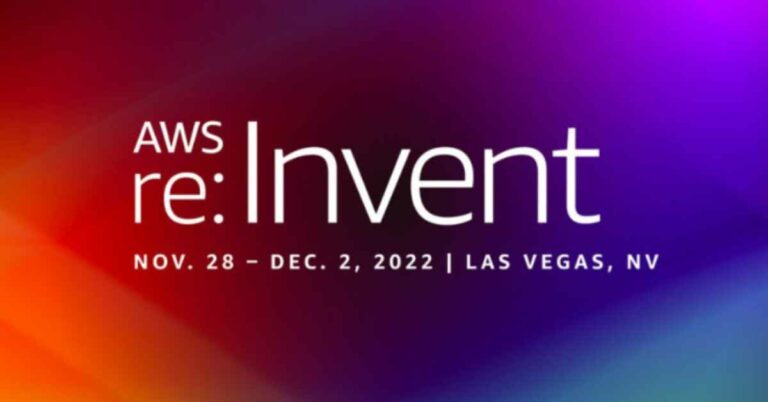Amazon Web Services (AWS) has kicked off its event from 27 November to December 1, 2023. There is a lot of buzz going about with a series of announcements. As the use of AI is increasing, cloud application development providers are encountering tough competition to meet customers’ demands.
AWS CEO Adam Selipsky’s keynote mentioned that the company’s position is to defend its position and continue to be the top cloud service provider in the market.
Let’s comprehend the noteworthy announcements and learn more about them in brief.
1. Client virtual desktop environment devices
It’s intentional for Amazon’s new thin client to resemble a Fire TV Cube. The business revealed this morning the release of new $195 devices that let corporate customers connect to online virtual desktop environments such as Amazon WorkSpaces. The Fire TV Cube hardware houses the devices, a choice Amazon chose to capitalize on pre-existing knowledge from the division of the retail behemoth that produces streaming media players.
The company clarified that it decided to develop new hardware in response to customer input symbolizing a desire to reduce IT expenditure by swapping out desktop and laptop computers for less costly models. According to Amazon, a large number of its business clients now access virtual desktops powered by AWS End User Computing Services, such as Amazon WorkSpaces, WorkSpaces Web, or Amazon AppStream, but they often do so using desktop or laptop computers that cost their employers between $600 and $1,200 apiece.
Despite not having all of a dedicated PC’s features, the new thin clients will significantly undercut that price. Nevertheless, the goal was to provide clients with a mechanism to get new end-user hardware faster and at a more reasonable price.
2. Amazon’s one palm-scanning service
Amazon has unveiled a new identification service that uses palm scanning to verify individuals as they enter physical locations. This service is part of Amazon Web Services, which is a cloud computing business.
Named after its surveillance-powered cashier-less stores, Amazon One Enterprise is an extension of the company’s current Amazon One solution, which was first presented in 2020 and allows biometric payments.
Given Amazon’s position as a leader in the cloud infrastructure industry and its role in the business software stack, Amazon One business is a logical next step for this technology.
Companies still want their employees to work in the office, at least part of the time, even in the age of the remote work revolution. Additionally, they may install contactless authentication devices anywhere people congregate, like airports, campuses, and office foyers, all thanks to Amazon One Enterprise.
3. Serverless offerings
At the AWS re: Invent conference on Monday in Las Vegas, Nevada, three new serverless products for the Aurora, ElastiCache, and Redshift services were revealed by AWS. Since the items were only unveiled in preview form, further information is still anonymous.
First, Amazon Aurora, a relational database management system designed for the cloud that supports MySQL and PostgreSQL, now has an infinite database feature thanks to an addition made by AWS.
Redshift and ElastiCache now have serverless solutions thanks to AWS. Real-time leaderboards for games, e-commerce platforms, and other applications are more manageable to set up and administer using AWS ElastiCache, a fully managed in-memory data storage and cache service. The cache service will enable a scaling of services with the addition of the serverless option.
Utilizing the most recent advancements in AI-driven scalability and optimization. Amazon Redshift Serverless is planned to maximize both cost and performance.
4. S3 Express OneZone
AWS S3 Express One Zone is a new S3 tier that offers low latency and excellent performance. Express One Zone, according to the business, provides a 10x boost in performance over the baseline S3 service.
According to AWS, One Zone will significantly boost performance for data-intensive applications such as high-performance computing, financial modeling, and AI/ML training.
Furthermore, although it can manage any size object with ease. AWS points out that because of its low latency access, it excels in use scenarios where applications need to access plenty of little files. Compared to S3 Standard, One Zone can read significantly tiny objects up to ten times faster.
4. AI models will get AWS titanium chips
The demand for generative AI development, which is frequently trained and operated on GPUs, is outpacing the supply of GPUs. Recently, the CEO of chipmaker TSMC expressed less optimism, speculating that the shortfall of GPUs from Nvidia and its competitors would last until 2025.
Companies that can afford it, i.e., the big tech companies, are designing and in some cases making available to customers bespoke CPUs designed for developing, refining, and commercializing AI models to reduce their need for GPUs. Among those companies is Amazon, which announced the newest iteration of its chips for model training and inferencing at its annual AWS Re: Invent conference.
5. Amazon Q AI chatbot
One of the most significant announcements at the event was the launch of Amazon Q, an AI chatbot for AWS customers. A business can use Q through a web application to examine, for instance, the product aspects its clients find challenging and potential solutions for them alternatively, a Word document, PDF, spreadsheet, etc can be uploaded, and queries concerning that file can be asked. Q is more than just a question answerer. The helper can create or summarize emails, press releases, and blog entries.
Conclusion
The highly anticipated event, AWS Re: Invent 2023, is not simply a gathering but rather a bold declaration for the future of cloud computing and artificial intelligence.
Each revelation made by Amazon Web Services serves as a testament to its unwavering dedication to pushing limits and developing unprecedented solutions in response to the constantly evolving technology realm. The threshold for digital advancements has been raised, and Amazon is paving the path forward.




























































